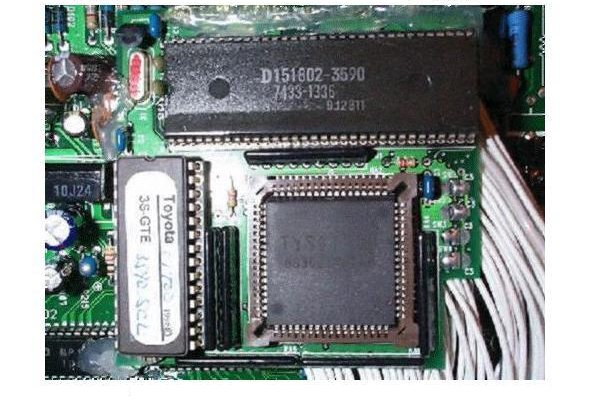 |
Home |
Tuning GT4 |
|
Home |
Tuning GT4 |
 Source: Dennis Heath.
Source: Dennis Heath.
How to run more boost on the 3S-GTE.
This is long, but it covers a lot of issues concerning running more
boost.
Ahhh....boost, probably the most misunderstood performance mod. Here's
my opinion, on the stock turbo, anywhere around 12 to 13 psi, even 14
psi, is good, but as soon as you start trying to go any higher, you're
gonna be out of the turbo's efficiency range. When that happens you no
longer are really producing much more air. What you are doing is
producing some extremely hot, very thin air at 16 or 17 psi, and will
end up with more than likely less power than at 14 psi, and a very
stressed engine, which will more than likely one day, have a piston for
dessert.
Another problem is that the higher the boost, the higher the cylinder
pressures. So keeping the charge air cool becomes more important, i.e.
maybe it's time to look into a new intercooler or water injection etc.
O.K., so you have an upgraded turbo and better means of cooling the
charge air, now you can run 16 or 17 psi of boost, and be within the
turbo's efficiency range, but as Ivan wisely inquires, what about fuel?
Well the stock pump is good to 60 psi of fuel pressure, and the stock
fuel pressure is approx. 38 psi, but remember that the stock fuel
pressure regulator will add 1 psi of fuel pressure for every 1 psi of
boost, so if you run 17 psi of boost you are now at (17 + 38) 55 psi of
fuel pressure, close to max pressure, which really isn't good cause as
the pressure increases, the volume of fuel the pump can supply drops.
Time to buy a pump if you want to run 17 psi.
Right, now you have a higher pressure, higher flowing pump, but can the
injectors supply enough fuel? Well the answer to that depends on how
much hp you're making. If you refer to Jeffrey's
page with the formulas
for working out fuel requirements
you'll see that
the stock 430cc @ 38 psi, will allow about 250hp at an 80% duty cycle,
but while it's not good to exceed 80%, you could use a 90% duty cycle
(IMO absolute max), and you'd be able to get around 280 hp.
However there's another problem, Toyota designed the car to run 8-10psi
of boost, and at 12 psi you get fuel cut. The maps themselves (crucial
to reliable safe performance) only go to about 12 psi. So your choices
now are, get a reprogrammed ECU, that now has maps to accommodate the
increased airflow, but even then 16, maybe 17 psi is the highest you can
go. Why? Because the stock MAP sensor is only a 2 bar kind, i.e. it
reads from approx. -14.7 psi to +14.7 psi give or take a psi or 2, and
the Air Flow Meter is only good for about the air equivalent to 16 psi.
Alright let's assume you've done the basics first like intake, exhaust,
colder plugs, better spark plug wires etc., plus your upgraded turbo,
better means of charge air cooling, your upgraded pump, and your
reprogrammed ECU. Next step, IMO, is to hook up the car to a good high
quality lambda meter. High quality lambda meters are very expensive (to
the tune of U.S.$1,500.00) and precise, I believe there are places that
rent them, but don't rely on a stock O2 sensor for accurate testing. Set
your boost to 16 psi, and take it for a test run, and check the mixture.
Once you're not running lean anywhere, you'll be safe. If you are, it's
time to turn the boost down a bit and recheck.
If you want to carry things further, then it's time for larger
injectors, a programmable engine management system that uses a MAP
sensor and air temperature sensor for mapping, allowing you to throw
your AFM and stock MAP sensor as far as you want, and some dyno time.
G-Force does upgrade the ECU.
Left G-Force ECU, right stock ECU:


One other thing, definitely move up a few octane in gas.
Dennis
1990 Toyota Celica GT-Four
 |
Home |
Tuning GT4 |
|
Home |
Tuning GT4 |


